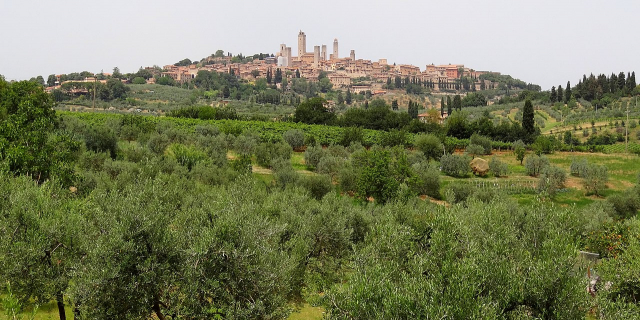Galleria degli Uffizi
( Uffizi )
The Uffizi Gallery (UK: yoo-FIT-see, uu-FEET-see; Italian: Galleria degli Uffizi, pronounced [ɡalleˈriːa deʎʎ ufˈfittsi]) is a prominent art museum located adjacent to the Piazza della Signoria in the Historic Centre of Florence in the region of Tuscany, Italy. One of the most important Italian museums and the most visited, it is also one of the largest and best-known in the world and holds a collection of priceless works, particularly from the period of the Italian Renaissance.
After the ruling House of Medici died out, their art collections were given to the city of Florence under the famous Patto di famiglia negotiated by Anna Maria Luisa, the last Medici heiress. The Uffizi is one of the first modern museums. The gallery had ...Read more
The Uffizi Gallery (UK: yoo-FIT-see, uu-FEET-see; Italian: Galleria degli Uffizi, pronounced [ɡalleˈriːa deʎʎ ufˈfittsi]) is a prominent art museum located adjacent to the Piazza della Signoria in the Historic Centre of Florence in the region of Tuscany, Italy. One of the most important Italian museums and the most visited, it is also one of the largest and best-known in the world and holds a collection of priceless works, particularly from the period of the Italian Renaissance.
After the ruling House of Medici died out, their art collections were given to the city of Florence under the famous Patto di famiglia negotiated by Anna Maria Luisa, the last Medici heiress. The Uffizi is one of the first modern museums. The gallery had been open to visitors by request since the sixteenth century, and in 1769 it was officially opened to the public, formally becoming a museum in 1865.
 Visitors observing Michelangelo painting Doni Tondo. Uffizi is ranked as the 25th on the most visited art museums in the world, with around 2 million visitors annually.
Visitors observing Michelangelo painting Doni Tondo. Uffizi is ranked as the 25th on the most visited art museums in the world, with around 2 million visitors annually.The building of the Uffizi complex was begun by Giorgio Vasari in 1560 for Cosimo I de' Medici as a means to consolidate his administrative control of the various committees, agencies, and guilds established in Florence's Republican past so as to accommodate them all one place, hence the name uffizi, "offices". The construction was later continued by Alfonso Parigi and Bernardo Buontalenti; it was completed in 1581. The top floor was made into a gallery for the family and their guests and included their collection of Roman sculptures.[1]
The cortile (internal courtyard) is so long, narrow, and open to the Arno at its far end through a Doric screen that articulates the space without blocking it, that architectural historians[2] treat it as the first regularized streetscape of Europe. Vasari, a painter, and architect as well, emphasized its perspective length by adorning it with the matching facades' continuous roof cornices, and unbroken cornices between storeys, as well as the three continuous steps on which the museum fronts stand. The niches in the piers that alternate with columns of the Loggiato are filled with sculptures of famous artists in the 19th century.
 Cosimo de' Medici by Luigi Magi and Andrea Di Cione (Orcagna) by Niccolò Bazzanti
Cosimo de' Medici by Luigi Magi and Andrea Di Cione (Orcagna) by Niccolò Bazzanti Tribuna degli Uffizi
Tribuna degli UffiziThe Uffizi brought together under one roof the administrative offices and the Archivio di Stato, the state archive. The project was intended to display prime artworks of the Medici collections on the piano nobile; the plan was carried out by his son, Grand Duke Francesco I. He commissioned the architect Buontalenti to design the Tribuna degli Uffizi that would display a series of masterpieces in one room, including jewels; it became a highly influential attraction of a Grand Tour. The octagonal room was completed in 1584.[3]
Over the years, more sections of the building were recruited to exhibit paintings and sculptures collected or commissioned by the Medici. For many years, 45 to 50 rooms were used to display paintings from the 13th to 18th century.[4]


































Add new comment